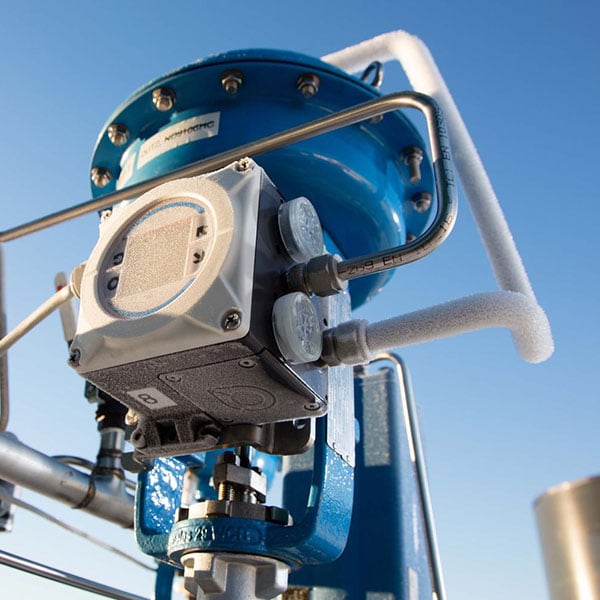Important Elements to Take Into Consideration When Choosing Control Valves
Important Elements to Take Into Consideration When Choosing Control Valves
Blog Article

Maximize Power Savings and Convenience With Advanced Building Automation Controls
In the realm of modern-day architecture and facility monitoring, the combination of sophisticated structure automation manages stands as a pivotal innovation. By taking advantage of the power of automation, buildings can adapt, react, and develop in ways that were as soon as unbelievable.
Power Performance Benefits
Power performance benefits can dramatically decrease power intake and functional prices in structures. By applying energy-efficient practices and technologies, structure proprietors and drivers can accomplish considerable cost savings while likewise adding to ecological sustainability. One of the main advantages of enhancing power performance in structures is the reduction of utility bills. Energy-efficient systems, such as sophisticated structure automation controls, can optimize using sources like cooling, heating, and illumination, resulting in reduced energy costs gradually.
In addition, boosted energy efficiency can extend the life-span of structure devices and systems. By running much more successfully, cooling and heating systems, light, and other building components experience less deterioration, leading to reduced upkeep and substitute costs. In addition, energy-efficient buildings often regulate higher residential or commercial property values and rental rates, providing lasting economic advantages to proprietors.
Moreover, power effectiveness can enhance occupant comfort and efficiency. Correctly managed interior settings with ideal illumination and thermal problems produce a more conducive and enjoyable work space, leading to boosted staff member contentment and performance. On the whole, the energy effectiveness advantages related to sophisticated structure automation controls are complex, incorporating cost financial savings, ecological stewardship, and resident wellness.
Enhanced Convenience Control
Enhancing convenience control in building settings needs an advanced combination of innovative automation systems for ideal passenger health. By utilizing advanced structure automation controls, centers can customize the indoor atmosphere to fulfill the specific requirements and preferences of passengers. These systems enable exact guideline of lighting, temperature level, and air flow, producing a effective and comfortable atmosphere. Owner satisfaction and performance are very closely connected to thermal comfort, making it important to have systems in area that can adjust to transforming conditions in real-time.
By integrating these innovative controls, buildings can not only boost comfort but additionally enhance energy performance by maximizing system operations based on actual occupancy and use patterns. Inevitably, prioritizing resident convenience with advanced automation systems leads to a more enjoyable and much healthier interior atmosphere.
Functional Effectiveness Improvements

Additionally, the application of real-time tracking and analytics devices enables structure drivers to determine power ineffectiveness and operational anomalies quickly. By constantly monitoring energy usage patterns and system efficiency metrics, modifications can be made in real-time to optimize energy consumption and make sure peak operational efficiency. control valves. Additionally, incorporating need action methods right into structure automation controls can additionally enhance functional efficiency by dynamically adjusting energy usage based upon grid problems and pricing signals
Indoor Environment Optimization
Effective interior environment optimization is an essential facet of building automation controls, making sure residents' convenience and wellness while maximizing energy savings. By utilizing sophisticated sensors and controls, developing automation systems can continuously change and keep track of temperature level, moisture degrees, air top quality, and ventilation to create an ideal indoor atmosphere. Maintaining constant and comfortable problems not just enhances occupant contentment yet likewise increases performance and overall wellness.
Interior environment optimization additionally plays an important duty in energy efficiency. By fine-tuning heating, air flow, and cooling systems based upon real-time data and occupancy patterns, developing automation controls can substantially decrease energy consumption - control valves. As an example, carrying out strategies such as demand-controlled air flow and thermal zoning can assist minimize energy waste while guaranteeing that each area of the structure receives the necessary conditioning.

Lasting Environment Creation
Structure automation manages not only maximize indoor climate problems for energy efficiency and occupant convenience yet likewise lay the structure for developing a lasting atmosphere via calculated administration about his of systems and resources. By incorporating innovative building automation modern technologies, such as sensing units, actuators, and smart software application, facilities can keep track of and change power use in real-time to lessen waste and lower their carbon footprint. These systems make it possible for predictive upkeep, identifying prospective concerns prior to they intensify and optimizing devices efficiency to enhance longevity and efficiency.
Moreover, sustainable atmosphere creation prolongs beyond power management to incorporate water preservation, waste reduction, and interior air quality renovation. Structure automation controls can manage water usage, spot leakages, and ensure click now correct waste disposal methods, adding to total sustainability efforts. Additionally, by managing and checking air flow and purification systems, these technologies enhance passenger wellness and performance while lowering power consumption connected with a/c operations.
Final Thought
In verdict, advanced building automation manages offer significant advantages in terms of energy savings, convenience control, functional efficiency, indoor environment optimization, and developing a sustainable environment. By carrying out these controls, buildings can attain optimum performance while reducing power consumption and improving passenger comfort. It is evident that using innovative automation modern technology is essential in boosting building efficiency and producing an extra sustainable future.
Energy effectiveness benefits can considerably lower power intake and functional expenses in buildings. On the whole, the power performance benefits associated with sophisticated building automation controls are multifaceted, encompassing cost savings, ecological stewardship, and passenger health.
In addition, including demand reaction techniques right into structure automation controls can additionally enhance operational effectiveness by dynamically adjusting energy usage based on grid conditions and pricing signals.
Building automation regulates not just optimize interior climate problems for energy performance and owner convenience however likewise lay the web link foundation for producing a sustainable environment through calculated management of sources and systems.In conclusion, advanced building automation controls deal substantial advantages in terms of power cost savings, convenience control, operational effectiveness, interior climate optimization, and creating a sustainable environment.
Report this page